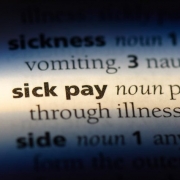Gender Pay Gap Reporting Requirements – What do you need to know to about your reporting requirements?
On 13 July 2021, the Gender Pay Gap Information Act 2021 (the Act) was signed into law. The Employment Equality Act 1998 (section 20A) (Gender Pay Gap Information) Regulations 2022 (the Regulations) were published on June 3rd 2022 (and are effective from 31 May 2022).
As part of phase 1 of compliance with the Gender Pay Gap Information Act 2021, employers with 250 or more employees will be required to comply with the reporting obligations from June 2022. In 2024, employers with more than 150 employees will be required to comply with the reporting obligations. Employers with more than 50 employees will be obliged to report on the gender pay gap by 2025.
The Regulations require organisations with over 250 employees to report on their gender pay gap in 2022 by reference to their employees on a snapshot date in June 2022. The reporting period is the 12-month period immediately preceding and including the snapshot date. Employers will be required to produce their gender pay gap information within 6 months of their snapshot date.
Employers must ensure that the December 2022 reporting deadline is strictly complied with.
It is important to ensure that all employees are captured on the snapshot date. If, for example, you have new recruits who commenced on that date those should be included in the metrics, as should employees not rostered on, and employee’s whose employment terminated on that date. The employment status of the employee on the snapshot date should be noted (e.g. full time, part time, temporary, casual etc), as this is important for calculation purposes.
Employers must report on:
- the mean and median gap in hourly pay between male and female employees;
- the mean and median gap in hourly pay of part-time male and female employees;
- the mean and median gap in hourly pay between male and female employees on temporary contracts;
- the mean and median gap in bonus pay between male and female employees;
- the percentage of male and female employees who received bonus pay;
- the percentage of male and female employees who received benefits in kind; and
- the percentage of male and female employees in each quartile pay band.
The Regulations explain how to calculate the gender pay gap, including how to calculate an employee’s hourly remuneration, bonus remuneration and total working hours.
The Department of Children, Equality, Disability Integration and Youth (the Department) also published guidance in June 2022 which details how to calculate gender pay gap metrics.
The Department has also helpfully published an FAQ for employers on addressing common issues which employers may face when analysing the data they have produced on the snapshot date and how those may be addressed in the December report.
A fundamental aspect of compliance with an employer’s obligations under the Act is to their duty to publish a statement setting out, in the employer’s opinion, the reasons for the gender pay gap in their company and what measures to eliminate or reduce that pay gap will be taken.
On the December Report date (six months after the Snapshot Date) employers must publish this information initially:
- On the employer’s website or in some other way and in a manner that is accessible to all its employees and to the public; and
- This information must be available for a period of at least three years.
In 2023, Employers will be required to provide this information to a centralised system which is currently not operational.
Sanctions
Employers should note that if it fails to comply with the December report deadline, an employee can refer a complaint to the WRC on the basis the company did not comply with the Regulations.
Orders can also be sought by IHREC from the Circuit Court or High Court requiring an employer to comply with the Regulations. On that basis, the December date should not be missed.
What should employers consider now?
Employers should firstly assess their workforce size to establish if they fall within the reporting requirements for 2022. If not, they should take this time to prepare and put in place measures to assist their HR and Finance teams to put in place measures for collecting and assessing data for when they will be required to meet their reporting year.
If you are currently an impacted employer, you should ensure you have collected the relevant information on a snapshot date in June, and if not, you should immediately undertake this step.
Employers should analyse the data recorded on the snapshot date in advance of producing their reports.
For any queries related to gender pay reporting requirements, please contact Elaine O’Flynn or a member of the employment team.

Contact details for Elaine O’Flynn:
Phone: 021 7301 31
Email: eof@ofx.ie

Contact details for Shane Crossan:
Phone: 021 7301 248
Email: scr@ofx.ie

Contact details for Judith Curtin:
Phone: 021 7301 314
Email: jc@ofx.ie
This article is an information and guidance document only and should not be construed as legal advice.









